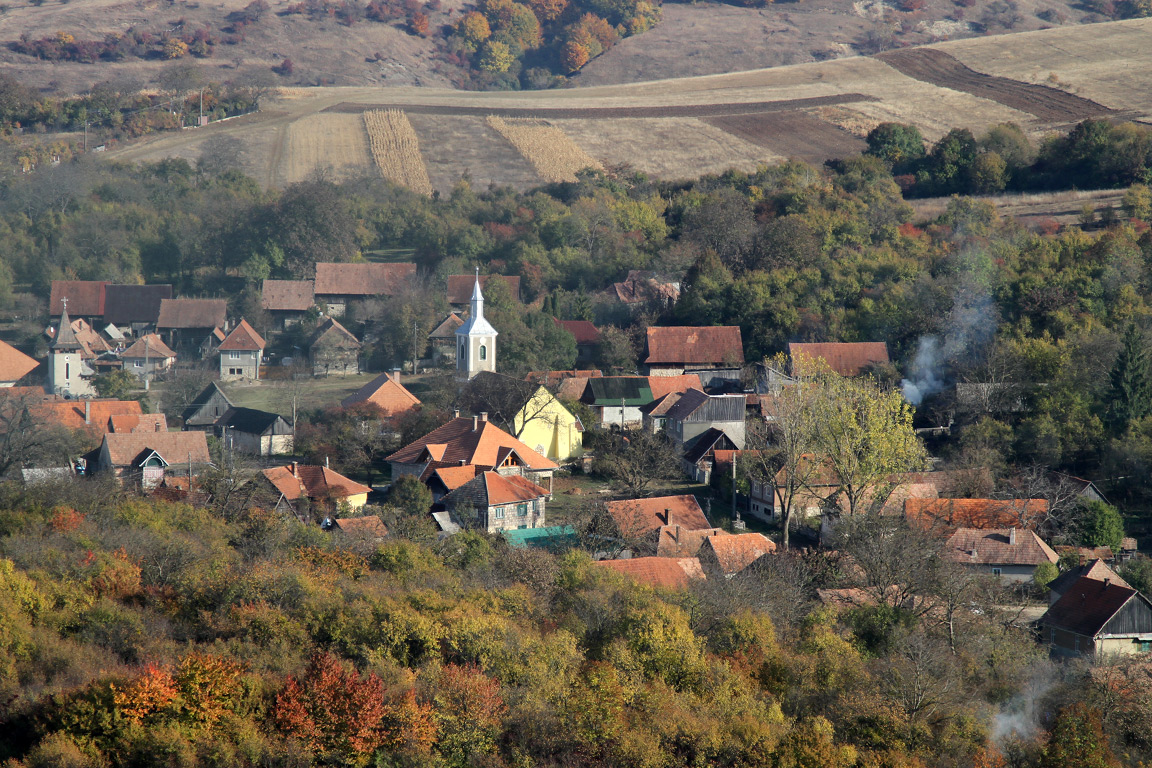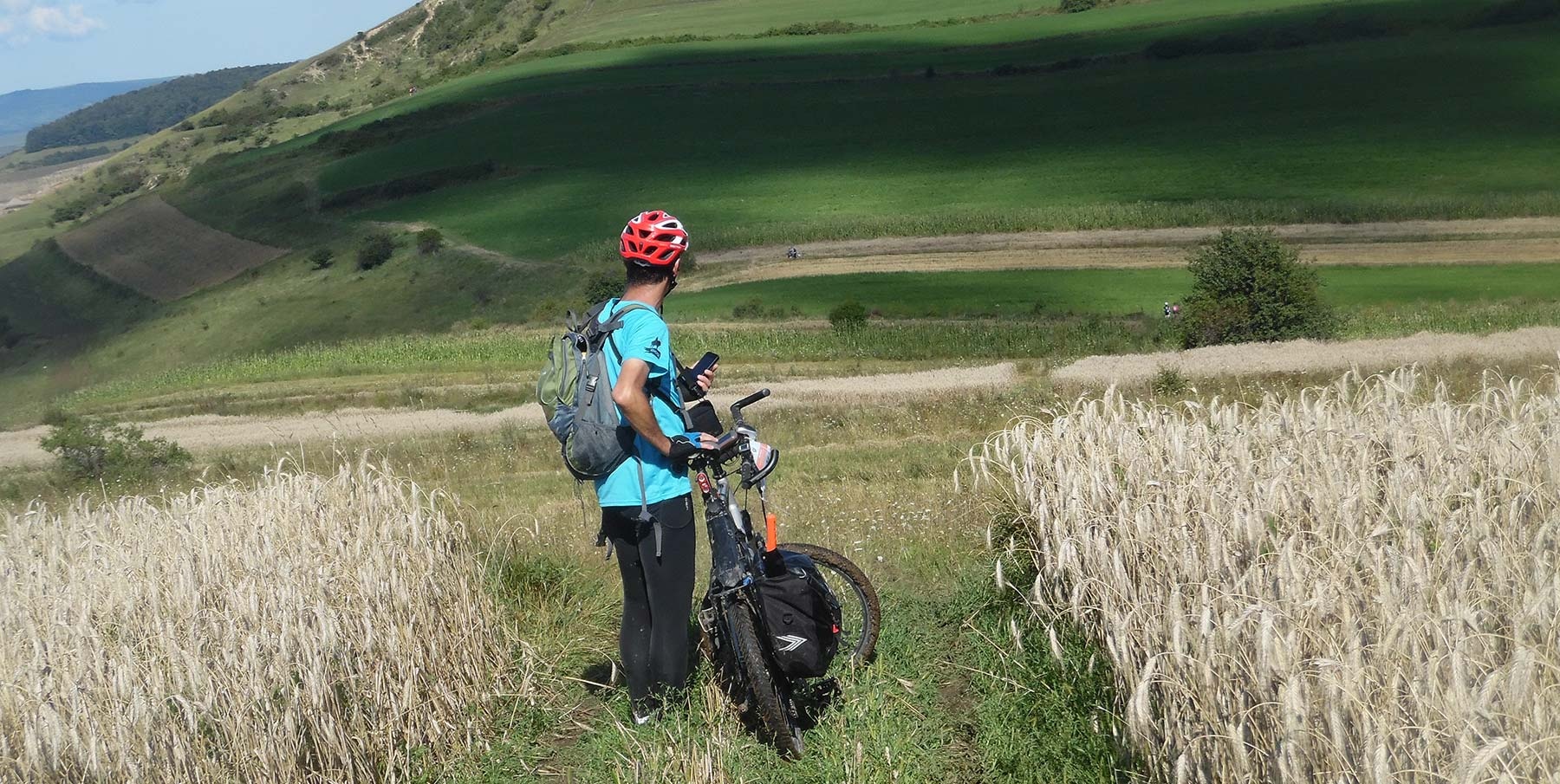Sztána (Stana)
A village of myriad streets, Sztána (Stana) was founded on a plateau between two valleys and is located near the eponymous creek in strikingly scenic surroundings. The prominently situated Reformed church is accessible from the central village square, built around a plentiful well-spring.
The Reformed church of Sztána
Surrounded by a low stone fence, the church was built at an undetermined time. The first recorded rebuilding occurred in 1640, and medieval elements are still discernible throughout. Multiple alterations eroded much of its original value.
“The 15th century nave was refurbished to the point of becoming unrecognizable, with the addition of an amateurish extension and unrefined three-story tower. The rebuilt nave’s coffered ceiling of 42 tiles, currently in the western part of the church, was completed in 1743. The tile decorations, made with unsteady hand, are the (old-age?) work of János Asztalos of Gyalu (or a replica of his work).” In the second half of the 18th century, the workshop of Lőrinc Umling worked on the church. In 1767 he painted the pulpit chair and in 1777 the canopy, with the usual Umling colors and lines. “Of great significance are the ten tiles concealed under the men’s balcony, most likely the workmanship of János Asztalos, some decorated with rich and varied border trim. Thirty-six other coffers were made during the 1836–1838 expansion of the church and are luxurious blue replicas of earlier samples.” The inscription of 1836 on the main door attests to this remodeling.
Other landmarks
- Károly Kós (1883-1977) architect, author, and politician is memorialized by the buildings he designed: his artist ranch and home, Crow Castle (Varjúvár) (1910); Jenő Szentimrei’s cottage and home (1925); the Greek Catholic (today Greek Orthodox) church (1927); and Szidónia Kós’s former cottage (1937). Today only the site of what was once Crow Ranch (Varjú-tanya) is visible on the side of Snail Hill (Csiga-domb).
- In the village market square stands Károly Kós’s bust (2013) by Zoltán Gergely.
- The renovated New School building hosts an exhibit featuring Kós’s architectural contributions from the period 1907–1917.
- The finest artifacts from the ethnographic collection of ethnographer Dr. Károly Kós (1919-1996) can be viewed in the New School’s small hall.
- In the Dogwood Flower Community Center (Somvirág Közösségi Ház), located in the fully renovated building that was once the parochial school, Denis Galloway’s 1920’s photographs depicting Sztána’s ethnographic and local history are on display in a permanent exhibit made possible by a grant from Attila Kilin. A plaque on the side of the building (by Barnabás Szakács) commemorates the centennial (2014) of the Sztána Protestant Ball organized by Károly Kós.
Bibliography: Dezső Malonyay: A magyar nép művészete (Hungarian Folk Art); Margit Kiss: Kispetri, református templom (Reformed Church of Kispetri); Árpád Furu: Kalotaszeg népi építészete (Folk Architecture of Kalotaszeg); Béla Kabay: Kalotaszegi műemlékek kis adattára (Small Archive of the Monuments of Kalotaszeg); Ferenc Mihály: Elpusztult templomi festett famennyezetekről (About Perished Painted Church Ceilings); Kalotaszeg antológia 1-2 (Anthology of Kalotaszeg 1-2). 1990–2008. Editor, Pál Buzás; Kalotaszegi krónikácskák (Small Chronicles of Kalotaszeg). Compiled by János Kovács Kuruc and Erzsébet Ildikó Szalai.
Photos by: Hunor Magyari, Ábel Juhász, Tünde Szántó, Róbert Branea.









